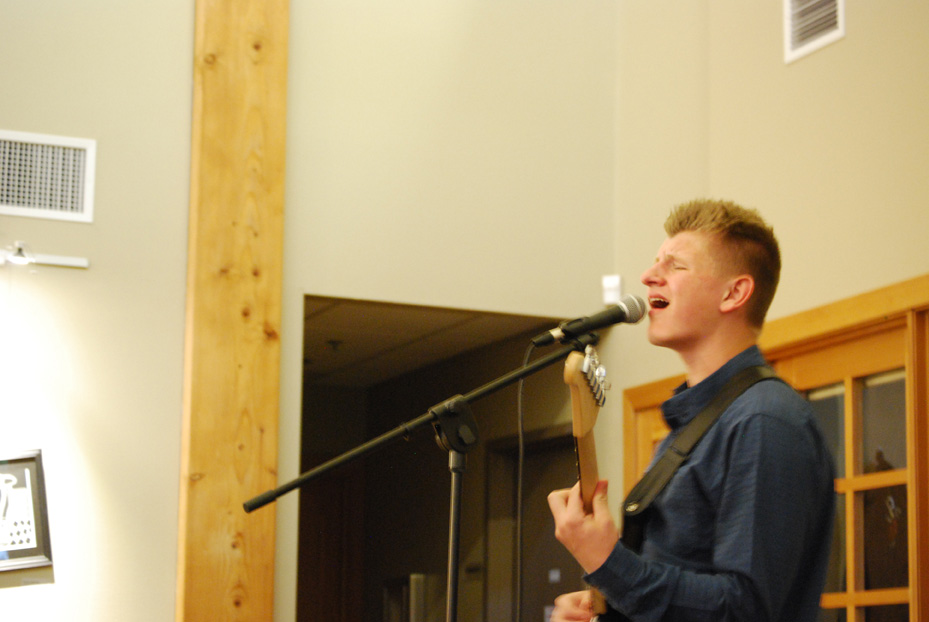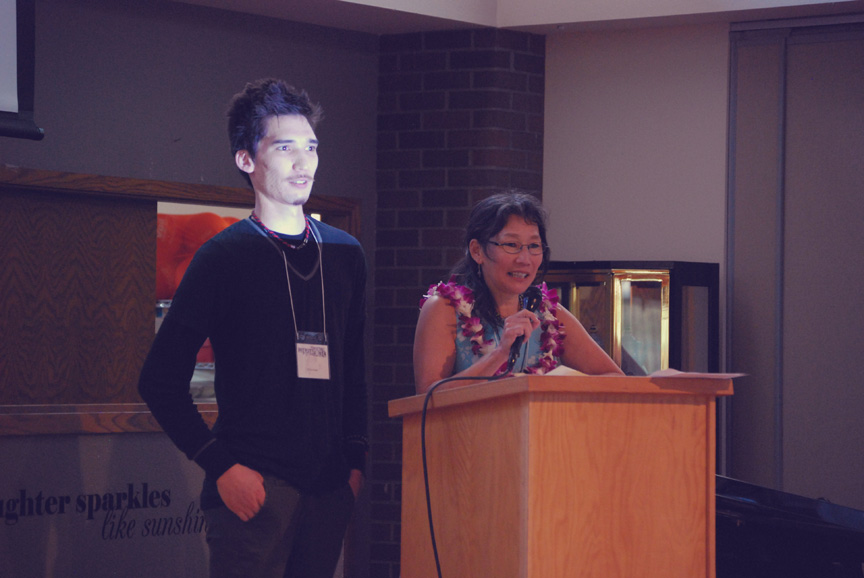Omphaloskepsis Blog
12 steps to working with people who live with mental illness
Jul 6, 2016
12 steps to working with people who live with mental illness
I made a decision early in the planning stages of The Incredible Intensity of Just Being Human not to include palliative programming. Recently, I listened to an NPR podcast that had me thinking about. The podcast was about a town in Belgium, Geel, that has a population of about 30,000, and approximately 45% of the population is living with mental illness. People come from all over the world live in Geel. The residents foster those living with mental illness, sometimes for decades. Those afflicted with mental illness see substantive improvements in their quality of life, their relationships and their ability to function day to day. It’s been suggested that the reason for this is total acceptance. The incoming residents are accepted for exactly who they are, as they are. The community is not trying to change or fix them.
In 2014 I made The curatorial decision to exclude remedy programming, in spite of many event suggestions like yoga, dietary lectures for health, meditation sessions, etc. I was concerned that including these components would send the message that people are not accepted for who they are, or that people need to be fixed. I was concerned that visitors might get the mistaken impression that we thought they were broken. I also was concerned that it would put the artists in the position of assuming a level of professional care and knowledge about mental illness that we didn’t have. I was concerned that remedy programming would reinforce stigma

[above: Randy Revellie, key note speech at Seattle City Hall Exhibit, January 2015. Also pictured, Mayor Murray and Representative Brady Walikinshaw. Photo Credit: Mark Lubinhauer]
It is often more difficult to overcome the stigma of mental illness than to recover from the illness itself. It took less than a month to diagnose and control my mental illness; it took four years to overcome the stigma.
Stigma is associated with a mistaken belief that mental illness reflects a personal weakness, a character flaw, or immoral behavior. While I may be guilty of all three of these, they have nothing to do with my mental illness.
The factors creating the stigma are fear, ignorance, and shame – fear of people living with a mental illness; ignorance of the illness; and the inability to overcome the shame wrongly associated with mental illness.
The ongoing stigma of mental illness prevents people from acknowledging their illness and seeking treatment. The stigma and discrimination tells individuals with a mental illness they are not valued by our society.
Please remember: people with a mental illness deserve parity, not discrimination; compassion, not indifference; understanding, not ignorance; and respect, not stigma.
We can help create a just, humane, and healthy society – a society in which all people are accorded respect, dignity, and the opportunity to achieve their full potential free from stigma and discrimination. –Randy Revelle, former King County Executive, Overcoming the Stigma
The Act of Othering
What stigma is that? It’s a subject that I, and the other participating artists, know well.
The Incredible Intensity of Just Being Human brings together citizens, artists, community leaders, and community-based organizations, to examine what might happen if stigma were set aside. That is, if artifacted and unnecessary barriers between people were overturned, in favor of many fewer assumptions and prejudices. Who is mentally healthy, after all, and who is not? And, according to whom?

[Above: crowd shot from Issaquah opening talks April 2016]
Well-being, in the usual sense, is a point on a continuum. Who among us is so firmly anchored at just that point that we can “other” people who seem too far away? Perhaps the very act of othering the mentally ill is superstitious, not rational. Perhaps we other people mainly to make ourselves feel safer from the most frightening, life-altering ills we can witness or imagine. What if we opted to be braver and less judgmental than that? To walk into the incredible intensity of just being human to find gifts, not fears or failures?
Not only to engage, but to participate in the work by examining the old and the new paradigms. I believe – we believe – there is freedom there, for all. Those who do not apply a stigma are as freed as those to whom it has been wrongly applied. A definite gain to the mainstream is learning to recognize the humanity in others who have become untethered. In Martin Buber’s phrase, it is in formulating the “I and thou” that our real strength is found. It is our differences that make us vulnerable, and our vulnerabilities that make us cherished.
What to expect when working with those who have been othered.
There are prevailing stereotypes about persons living with mental illness that prevail. Most common among them is the idea that those living with mental illness cannot be counted on to follow through or complete a task. Indeed, some people living with mental illness have diminished motivation either due to their mental illness or to the medications they use to regulate their mental illness.
But it is categorically untrue that one cannot work with someone living with mental illness. Additionally, there are man positives outcomes.
First of all, one in four people every year are diagnosed with a mental illness. So, you’re likely already working with someone who is struggling and you don’t know it. But for those members of the community I’ve worked with that are “out” and have chronic difficulties, I have learned that there are some things I can do to help with positive outcomes.

[Above: Sam Foster performs at soft opening Issaquah, Blakely Hall, April 2016]
12 steps to creating a productive work relationship with persons living with mental illness.
- Manage my own expectations. Set reasonable expectations for myself and my collaborator. Learn what the boundaries are. Operate within in them.
- Be flexible.
- Listen.
- Create opportunities for open ended solutions. Don’t push my agenda but embrace what my collaborator can bring to the table. Be open to it unexpected solutions.
- Give everyone enough time. Begin earlier, or have a longer lead time to accomplish tasks
- Don’t rely on one type of communication, use what’s best for my partner, email, phone, text, in person, third party. Take the time to learn what works and use it.
- Close the loop in communication. Follow up. Follow up. Follow up. Every time. Immediately.
- Prompt: Confirm expectations, dates, meeting times, phone numbers, send out reminders
- Ask: Are you comfortable with this? How can I make this work for you? What do you need?
- Never take it personally. As difficult as an interaction may be, imagine how much harder it is for the person on the other side of it.
- Show appreciation, acceptance and compassion. Don’t pass judgment.
- Show up. The most important thing any involved party can do is simply to show up. Being present is 95% of human interaction.
In 2014 I started working with June Sekiguchi’s son Quin, who speaks openly about living with schizo-affective disorder. He was working with the exhibit to create the QR code program. It was a sizeable job that required juggling many contributors schedules, as well as keeping track of a plethora of documentation. One of our steering committee members partnered with Quin to work on the project. I took on the collection of materials and programming. Quin took on the piece of the project that most appealed to him, the video and audio recordings.
The_Risk_Final.mp3 This is a recording Quin made of my reader for my painting, And the vacuum cleaner swallows its bag.
The following year we produced the exhibit for the Issaquah community. At the opening, June and Quin were featured speakers. It was important they to speak directly to the community where Quin grew up. They introduced themselves, their story and the key note speaker Ellen Forney. Quin spoke first, briefly, and then June spoke while Quin stood at her side. There was not a dry eye in the room. We all saw Quin for the beautiful human being his is, both through his own grace and through his mother’s love.
Afterwards Quin approached me, sheepish, and to my surprise he apologized for not “bringing it.” I was so surprised. I saw the whole presentation as an enormous success. Quin showed up. He stood on the stage and said this is who I am and then stayed there, present, while his mother spoke. It was so moving, and important and had a lasting impact on all who were there that night.

[Above: Quin Breeland and June Sekiguchi speaking at the opening in Issaquah April 2016. Background, Ellen Forney's book: Marbles]
So here I am- just one person in this crowd- touched in so many ways by mental illness- in a crowd of people who are similarly touched- in a community who is similarly touched- in a region, in a state, in a country…. And yet what do we do? For the most part, we pretend. We pretend everything is fine with ourselves, with our children, for to do otherwise is to risk the permanent stigma of a socially unacceptable diagnosis. I have a son who is gay. I can stand here and state that fact with little fear of judgment or stigma for him—or for me. 5 years ago that would not have been the case. And yet, it is easier for me to tell you that fact about him than that he is currently experiencing significant depression.
And so how do we shatter the stigma? I believe we step out of our silos of silence and we talk about it so much that it becomes common knowledge—that for our brains to take ill, the same way our bodies take ill—is a common occurrence. We courageously state our truths…about ourselves, about our loved ones… and we trust that over time, our speaking up will encourage others to speak up until one day, words like depression, bi-polar, anxiety, schizophrenia will just be words—and not damaging labels. –Robin Callahan, Director, Issaquah Schools Foundation

[Above: Robin Callahan, Issaquah Schools Foundation, opening the exhibit, right: MaryLou Pauly, deputy Council President, filling in for Mayor Butler]
The Rewards
The rewards of working with persons living with mental illness are many. The experience is enriching, vibrant, and joyful. Often solutions are presented that I never would have imagined.
The late art critic Robert Hughes observed, “Art teaches us something about the world we live in.” We are all human beings having a human experience. It’s intense, incredibly intense. If art must teach us something about the world we live in, then perhaps it teaches us to reach out to others, that to dig deeper reaps rewards, and that we share the human condition. To share is the antithesis of labeling, and the path to overturning stigma. “Nothing human is alien to me,” as Goethe remarked.
Sources:
Link to podcast http://www.npr.org/sections/health-shots/2016/07/01/484083305/for-centuries-a-small-town-has-embraced-strangers-with-mental-illness
Photos: Matthew Pachecko and Lelia Saghafi
 MENU
MENU